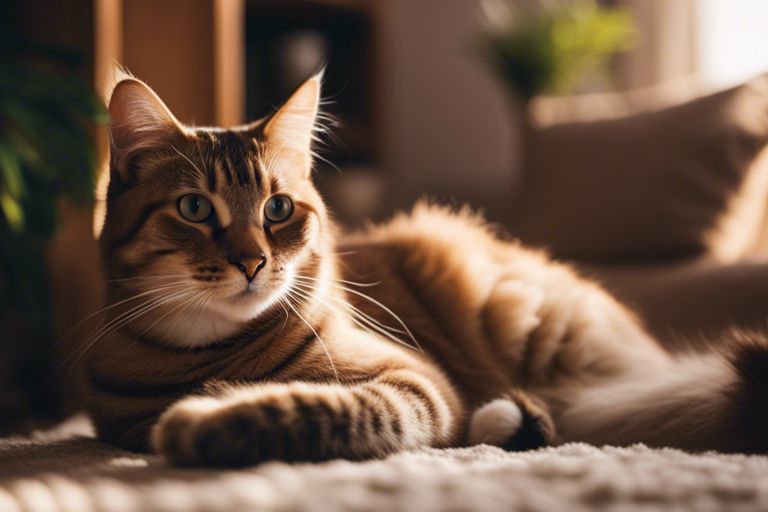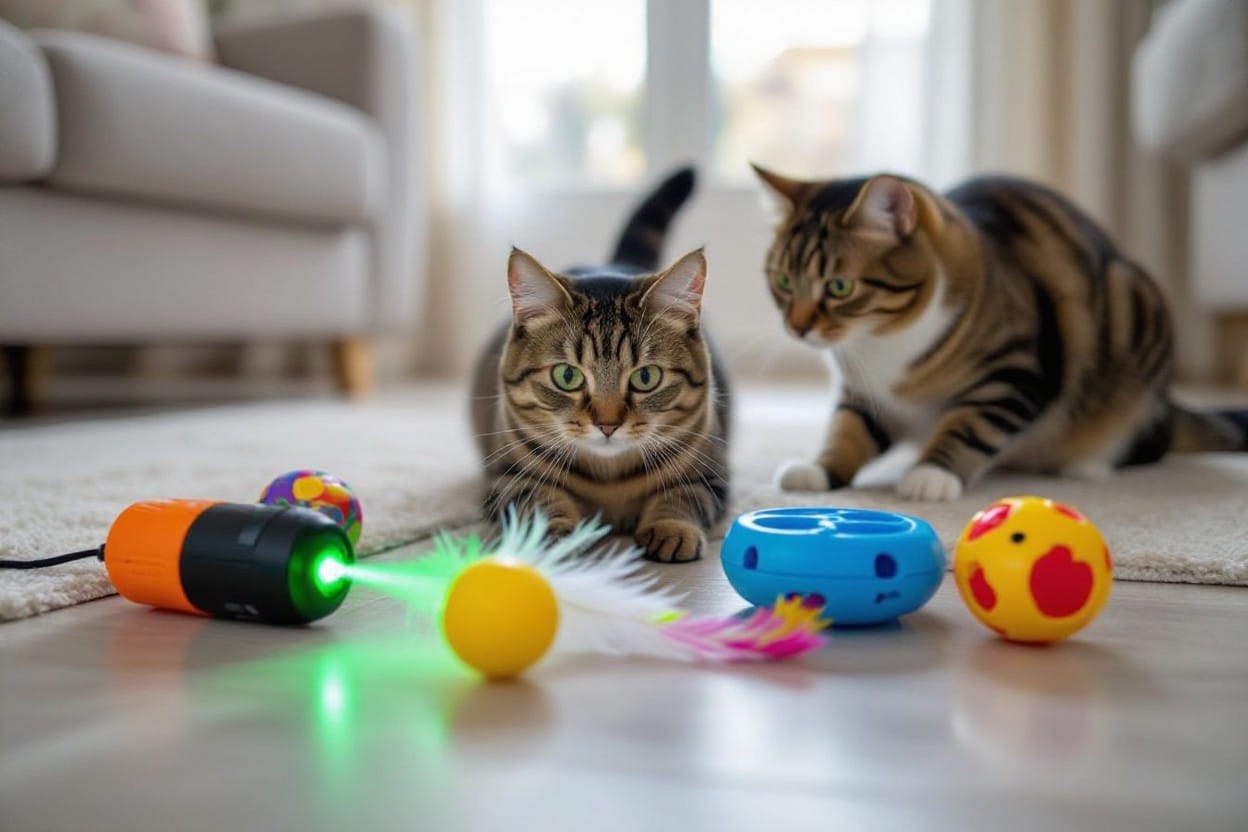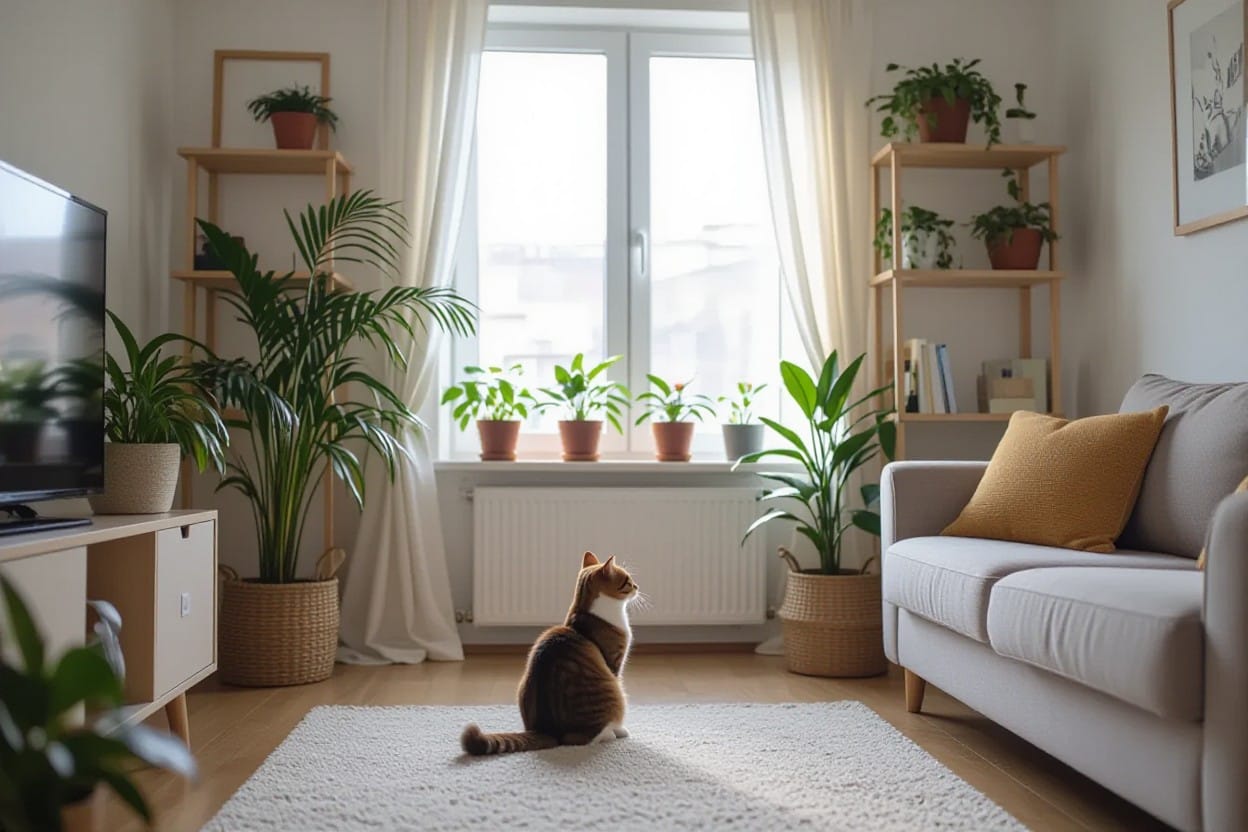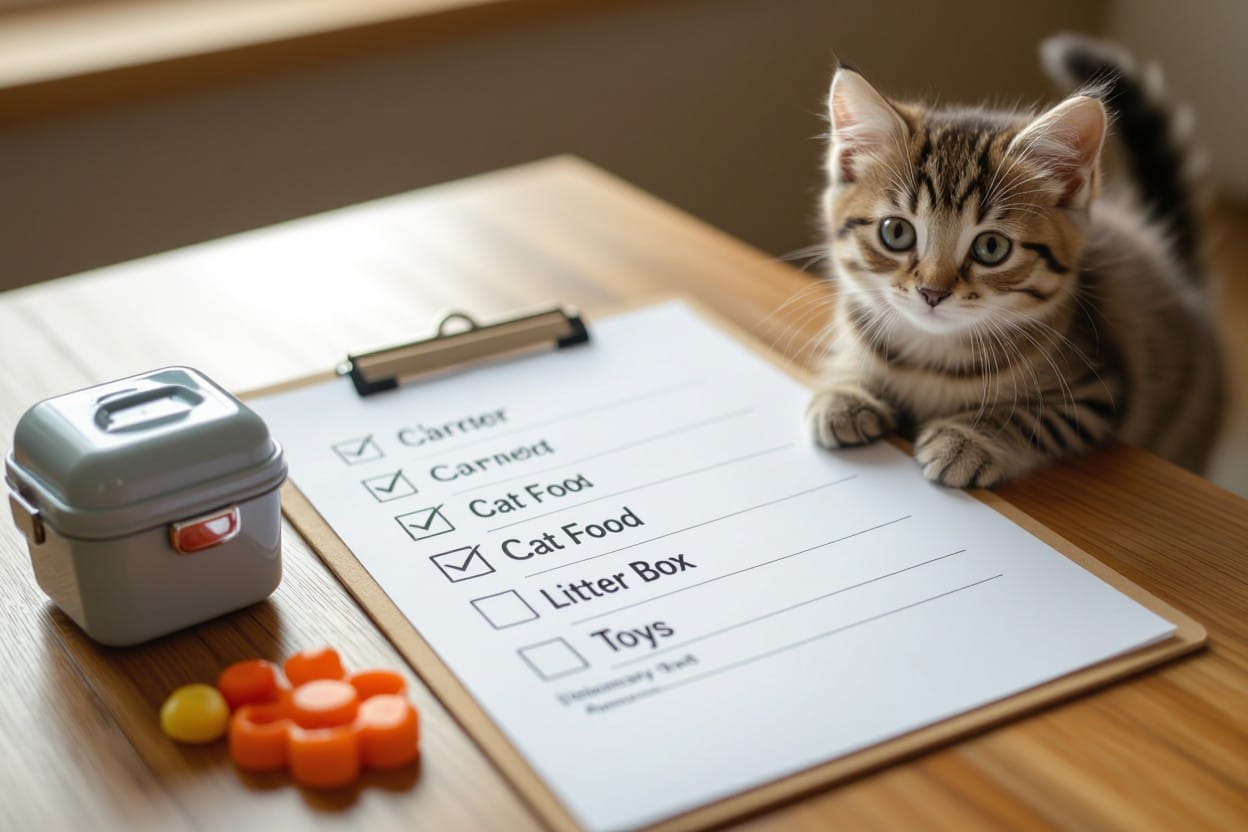Cat’s stress can manifest in various ways, affecting their health and behavior. As responsible pet owners, it’s crucial to understand how to identify and manage stress in our feline companions. In this blog post, we will discuss effective tips and techniques to help alleviate your cat’s stress and create a calm and happy environment for them. By implementing these strategies, you can ensure your cat’s well-being and strengthen your bond with your furry friend.
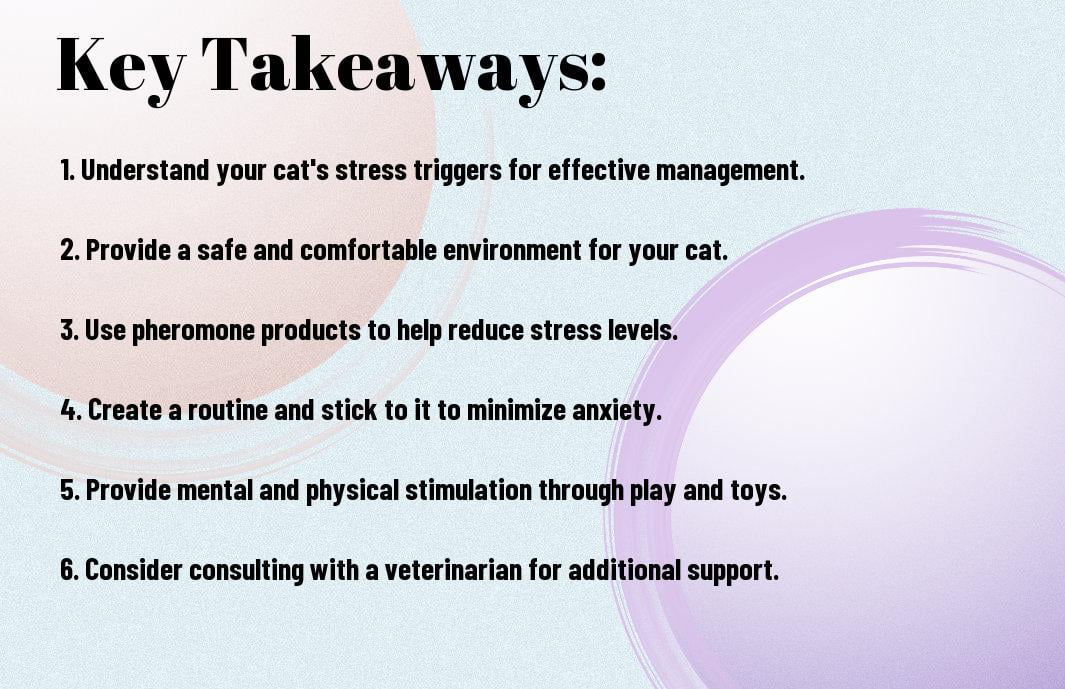
Identifying Signs of Stress in Cats
Behavioral Indicators
The first step in managing your cat’s stress is to be able to identify the signs. Behavioral indicators are often the most obvious clues that your cat is feeling stressed. Watch out for changes in your cat’s behavior such as increased aggression, hiding more than usual, excessive grooming, or changes in appetite. These can all be signs that your cat is feeling overwhelmed and stressed.
Physical Symptoms
An important aspect of recognizing stress in cats is to pay attention to physical symptoms. If your cat is experiencing stress, you may notice changes in their body language such as flattened ears, dilated pupils, or a tucked tail. In addition, stress can manifest in physical symptoms like vomiting, diarrhea, or changes in urinary habits. These signs may indicate that your cat is under significant stress and needs your attention.
Plus, remember that each cat is unique and may display different signs of stress. It’s crucial to know your cat’s normal behavior and habits so that you can easily spot any deviations that could indicate stress.

The Science of Feline Stress
The Feline Stress Response
To understand how to manage your cat’s stress, it’s imperative to first grasp the feline stress response. When your cat perceives a threat or challenge, their body reacts by releasing stress hormones like adrenaline and cortisol. This physiological response is a survival mechanism that prepares them for a potential fight or flight situation.
Long-Term Effects of Stress on Health
Health experts have long recognized the detrimental effects of chronic stress on overall well-being. Similarly, prolonged stress can take a toll on your cat’s health. Chronic stress can impact your cat’s immune system, making them more susceptible to illnesses and infections. Additionally, it can contribute to digestive issues, skin problems, and behavioral changes.
Plus, continuous exposure to stress can lead to long-term health issues such as obesity, diabetes, and heart disease in cats. It’s crucial to proactively manage your cat’s stress to prevent these severe health consequences and ensure their overall well-being.
Environmental Factors Contributing to Stress
For our feline friends, the environment they live in plays a significant role in their stress levels. Understanding and addressing these environmental factors can help reduce stress and improve your cat’s overall well-being.
Home Environment
Environmental factors within the home such as loud noises, lack of hiding spots, changes in routine, or overcrowding can all contribute to your cat’s stress levels. It’s important to create a peaceful and safe environment for your cat to help them feel calm and secure. Providing scratching posts, cozy hiding spots, interactive toys, and a consistent routine can all help reduce stress in the home environment.
Though cats are known for their independent nature, they still thrive in an environment that caters to their natural instincts and provides a sense of security.
Outside Influences
Contributing to your cat’s stress are outside influences such as neighborhood cats, wildlife, loud noises, or unfamiliar people. These factors can trigger anxiety and fear in your cat, leading to increased stress levels. Creating a safe outdoor space or providing environmental enrichment indoors can help minimize the impact of these outside influences on your cat’s well-being.
Another important consideration for managing outside influences is ensuring your cat has a safe and secure outdoor space to explore. This can include a catio or enclosed outdoor area where your cat can enjoy the sights and sounds of the outdoors without being exposed to potential stressors.
Socialization and Its Role in Stress Prevention
Unlike dogs, cats are often misunderstood when it comes to socialization. Many people believe that cats are solitary animals that prefer to be left alone. However, proper socialization is crucial for a cat’s overall well-being and can play a significant role in preventing stress and anxiety.
Importance of Early Socialization
Role of early socialization cannot be overstated for kittens. Exposing them to various people, animals, and environments during their critical socialization period (between 2 and 9 weeks of age) can help them grow up to be well-adjusted and confident adults. Cats that have not been properly socialized during this time may display fear or aggression towards unfamiliar people or situations later in life.
Tips for Socializing Adult Cats
Socialization of adult cats may require more time and patience compared to kittens. If you have recently adopted an adult cat that lacks social skills, here are some tips to help ease them into new experiences:
- Provide a safe space for your cat to retreat to when they feel overwhelmed.
- Use positive reinforcement techniques, such as treats or toys, to associate new experiences with good outcomes.
- Gradually introduce your cat to new people and animals in a controlled environment to prevent them from feeling threatened.
After consistent and positive socialization efforts, adult cats can learn to trust and feel comfortable in various social situations, reducing their overall stress levels.
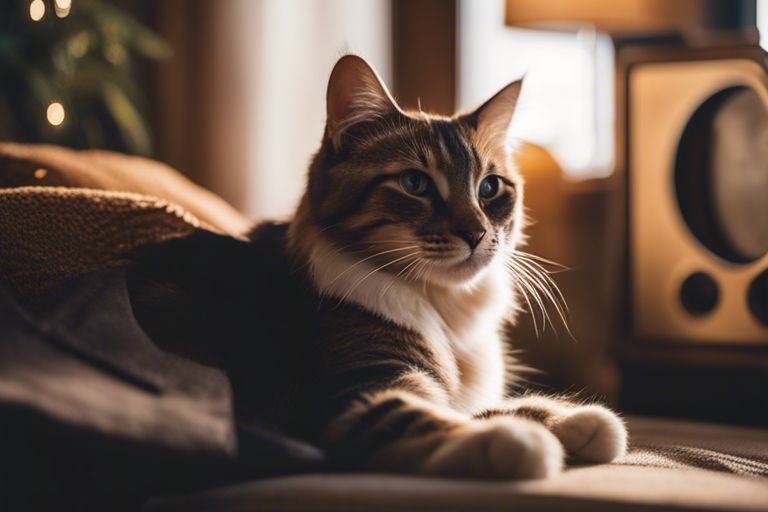
Stress Reduction Techniques
Environmental Enrichment
On top of ensuring your cat has a quiet and safe space to retreat to, environmental enrichment is key to reducing stress. This includes providing scratching posts, hiding spots, climbing trees, and interactive toys to keep your cat mentally and physically stimulated. Rotating toys and creating a space for your cat to look out the window can also help alleviate boredom and stress.
Interactive Play and Exercise
One way to reduce your cat’s stress levels is through interactive play and exercise. Play is not only a great way for your cat to expend energy, but it also helps strengthen the bond between you and your feline friend. Use toys that mimic prey, such as feather wands or laser pointers, to engage your cat’s natural hunting instincts. Make time for at least 15-20 minutes of interactive play each day to keep your cat entertained and stress-free.
Enrichment through play is not only beneficial for your cat’s physical health but also for their mental well-being. Cats that are mentally stimulated and engaged are less likely to experience stress-related behaviors like aggression or excessive grooming. Interactive play can be a fun and rewarding way to keep your cat happy and stress-free.
Professional Interventions and Therapies
Many times, managing your cat’s stress may require professional interventions and therapies. Understanding when to seek veterinary advice and considering alternative therapies and supplements can help in creating a comprehensive plan for your cat’s well-being.
When to Seek Veterinary Advice
An important step in managing your cat’s stress is knowing when to seek veterinary advice. If you have tried various techniques without success or if your cat’s stress seems to be escalating, it is time to consult with a veterinarian. They can help assess the underlying causes of stress and recommend appropriate interventions to ensure your cat’s mental and physical health.
Alternative Therapies and Supplements
With the guidance of veterinary professionals, alternative therapies such as acupuncture, massage, or even aromatherapy can be beneficial in reducing your cat’s stress levels. Additionally, supplements like pheromone diffusers or calming treats may also aid in promoting relaxation and reducing anxiety in your feline companion.
Supplements like Feliway, a synthetic pheromone that mimics the natural calming pheromones produced by cats, can be a valuable tool in managing stress-related behaviors. These supplements can provide a sense of security and comfort to your cat, helping them feel calmer in stressful situations.
Creating a Stress-Free Lifestyle for Your Cat
Routine and Stability
For your cat, establishing a routine and stable environment is crucial in reducing stress. Cats thrive on predictability and feel more secure when they know what to expect. Try to keep your cat’s feeding times, playtime, and litter box cleaning on a consistent schedule. Additionally, ensure that your cat has a designated safe space where they can retreat to when they need some alone time. Consistency in their daily routine will help your cat feel more at ease and less anxious.
Continuous Learning and Improvement
Any cat owner can benefit from continuously learning about feline behavior and ways to improve their cat’s quality of life. Stay updated on the latest research and developments in cat care, and be open to trying new techniques that could benefit your cat. Regularly assess your cat’s environment and make changes as needed to ensure they are comfortable and happy. By staying proactive and engaged in your cat’s well-being, you can help minimize their stress and create a harmonious living situation for both of you.
Continuous learning and improvement also involve observing your cat’s behavior and reactions to various stimuli. By being attuned to your cat’s signals, you can better understand what triggers their stress and make adjustments to their lifestyle accordingly. Whether it’s offering new toys for mental stimulation or creating additional hiding spots for security, small changes can make a significant difference in your cat’s overall stress levels.
To wrap up
Hence, managing your cat’s stress is a crucial aspect of ensuring their overall well-being and happiness. By implementing the tips and techniques mentioned in this guide, such as creating a safe space, providing mental stimulation, and maintaining a routine, you can help your feline companion feel more relaxed and content in their environment.
Remember that every cat is unique, so it may require some trial and error to find the best strategies that work for your specific furry friend. Patience, observation, and consistency are key when it comes to managing your cat’s stress effectively. With dedication and care, you can help your cat lead a harmonious and stress-free life.
FAQ
Q: What are common signs of stress in cats?
A: Common signs of stress in cats include excessive grooming, hiding, loss of appetite, aggression, and inappropriate elimination.
Q: How can I reduce stress in my cat’s environment?
A: To reduce stress in your cat’s environment, provide plenty of hiding spots, vertical spaces for climbing, interactive toys, scratching posts, and consistent feeding and playtime schedules.
Q: What are some techniques for calming a stressed cat?
A: Techniques for calming a stressed cat include creating a safe space, using pheromone diffusers or sprays, engaging in interactive play, providing soothing music or white noise, and maintaining a routine.
Q: Should I consult a veterinarian if my cat is stressed?
A: Yes, it is recommended to consult a veterinarian if your cat is displaying signs of stress to rule out any underlying medical conditions and to seek professional advice on managing your cat’s stress.
Q: How can I help my cat adjust to changes in its environment?
A: To help your cat adjust to changes in its environment, make gradual transitions, provide a familiar scent or item, offer treats and positive reinforcement, and give your cat time to explore and adapt at its own pace.
